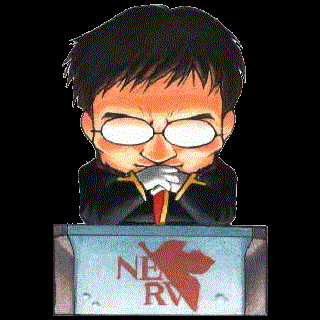It’s from the streamed clams they’re having.
Ooh. I know this one. Parts of NYC still use a steam heating system that was first designed in the late 1800’s:
Thank you. There’s so many people responding with unhelpful answers.
Wow that’s neat
No, that’s heat.
Yeet the heat or beat the meat
Yeet the meat not the heat.
You should tell this guy.
Denzel movie used the steam pipes
That isn’t steam, it’s smoke. Smoke from the smoked hams we’re having. Mmmm, smoked hams.
I thought that was from the streets of Albany?
no, there it was the other way round, pay attention
Ah, so it was the streets of Utica.
Surely you mean smoked clams?
I immediately thought of this tune for some reason.
That’s not smoke. It’s a space station.
That’s no moon, it’s… oh, wait… shit.
The CHUDs are having a BBQ. Guess the markets closed for the day.
I think it’s important, at this point, to differentiate between NYC CHUDs, and your common racist shitbag chud. NYC CHUDs are many things, but not racist dickbags.
I’m just referencing the movie, but if you think that there are not racists in NYC, you haven’t talk to enough New Yorkers.
Believe it or not. Very old infrastructure in the city. Still runs on steam power.
I swear I thought this answer was about as accurate as the one that said “dragons”.
How steampunk for probably the largest city in the world to use steam in this day and age? I love it…
I’m going to have to interject, NYC is the 11th [or 35th] largest city.
11th, OR 35th? Could you explain?
Or 3rd or 76th.
It depends on how you define the city, here’s my source: https://en.wikipedia.org/wiki/List_of_largest_cities
That list is from 2018
NYC didn’t grow any more populous since.
https://www.nytimes.com/2024/03/14/nyregion/nyc-population-decline.html
I don’t know why they include the surrounding areas as part of the city population. The 5 boroughs is roughly 8 million people. If you live in jersey city, you shouldn’t be counted as part of nyc population
I don’t know why they care about population https://en.m.wikipedia.org/wiki/List_of_largest_cities_by_area clearly land is more important because land votes not people.
See it in Kansas City usually in the winter.
Old steam heating system. They vent it when they’re working on a section.
Side-note: surprised by all the fellow New Yorkers i’m seeing in this thread. I thought yous were still at the other place.
Yep. Detroit has this, too.
Yeah it’s common enough I figured most knew, but a few years ago I went ice skating at the bryant park rink with someone who refused to walk anywhere near the steam. They thought it was toxic and didn’t accept my explanation, so we had to walk an extra few blocks to get around the steam work. Shrug
I wonder if they could make it more efficient by running at a lower temperature and installing water source heat pumps in buildings. https://youtu.be/abGiNL9IT54
That’s a good idea! My understanding is that the old steam network is slated for decommission and replacement by this program, basically a large distributed geothermal heat pump network that also harvests from major heat producers like data centers and provides both heating and cooling.
It will end the era of the steamy-street Sin City aesthetic but should be many, many times more efficient than the old steam system. Phase-change thermal transfer in HVAC systems is nearing 400% efficiency, so 4 times more efficient than the theoretical limit of direct heating, because it only uses the energy necessary to move heat from one place to another rather than produce it, and it works for both heating and cooling.
Right now I believe they’re piloting the system in NYCHA buildings (public housing) of neighborhoods outside the old steam network, like Chelsea and Hell’s Kitchen, but supposedly the plan is to expand to the rest of Manhattan.
Edit: corrected coefficient of performance
Teenage mutant ninja turtles barbeque
They outlawed chem trails so they had to change tactics.
Damn nobody likes a joke?
That’s just from the ruins of Old New York that New York is built on top of. The mutants down there are a steampunk society.
Some big cities originally heated their buildings by producing steam in one one centralized building and delivering it to large buildings thru pipes underground. The steam you see is from leaking pipes in this antiquated infrastructure. It’s a very inefficient method if you ask me. Cities should offer these buildings low interest loans so they can update and be independent but they never take my advice
Afaik it’s not inefficient if the heating is done via fossil fuels as big furnaces (especially in the past, especially turbo-fan super-fine grind coal ones) are much more efficient than smol ones for individual buildings (even if the buildings are giant).
It’s terribly inefficient. The efficiency is lost when the steam that condenses back into hot water is lost and none of it is returned to the boiler to be reheated. Rather than reheating this returning water which normally is at 120-160 degrees Fahrenheit, fresh water is used which in the winter here is around 56 degrees. Aside from this the cold water taken in contains impurities such as dissolved gasses which cause corrosion and dissolved minerals which can cause scaling that acts as an insulator raising the amount of energy needed to heat the water.
Oh, I didn’t know it was a one-way system in NY.
A weird decision, but I guess it lowered the initial cost a bit?The difficulty was drainage. Isolated steam systems in steam era construction were designed to use gravity for condensate collection. It’s one of the reasons boilers are always in the basement of old buildings.
Steam system engineering was a well-compensated profession. A well-designed system would accurately predict the rate of condensate flow for every part of the building, prior to construction, and reflect these predictions in the slope/grade and diameter of the steam pipes. Inaccurate predictions resulted in problems like pipe knock (aka steam hammer) which you can often hear when you or a nearby neighbor partially close the shut-off valve of a radiator.
Since construction in the city had many elevations and could not be predicted in advance, there was no equivalent solution to facilitate condensate collection. The system had to be one way. And yes, it’s inefficient compared to modern systems, but was innovative in its day.
District level heating is actually pretty efficient, some universities do the same thing on purpose to save on bills. Our relatively young city does it with the downtown skyscrapers for the same reason.
The other nice thing is that when you upgrade the heating system to be less carbon intensive, you can instantly have a ton of buildings all jump instantly to fewer emissions too.
Why not just have the city mandate the upgrades and then implement them? It’s probably not that big of a problem for everyone involved.
If it were that simple everyone would have done it by now. This method of heating your building is very expensive. Long story short, I’m in the HVAC business and two of my customers have made themselves independent. One was a private property management company that gutted an empty building and was successful, the other is a federal building that hired a private company to convert over and got screwed.















